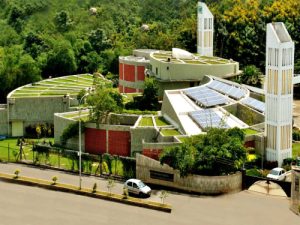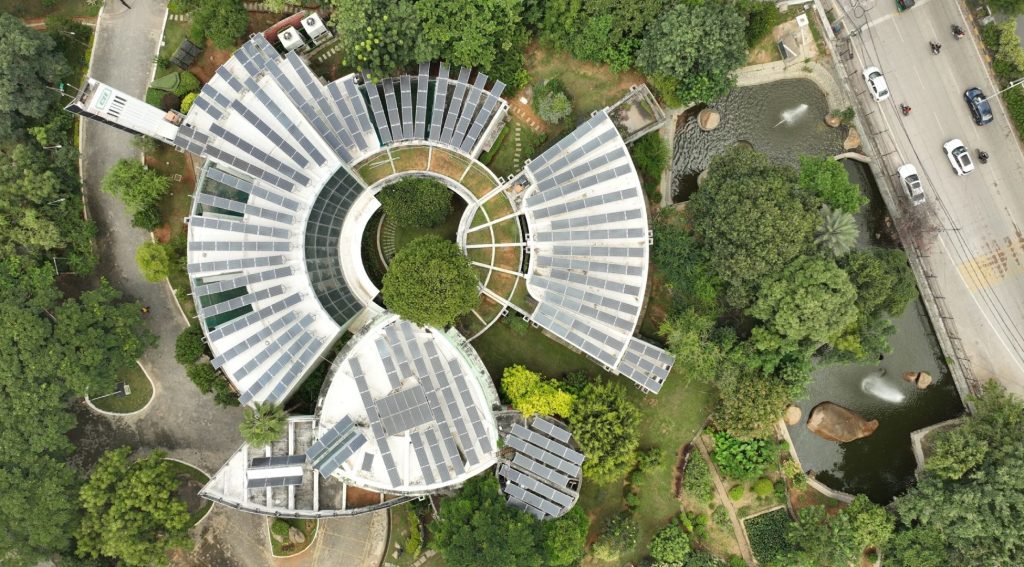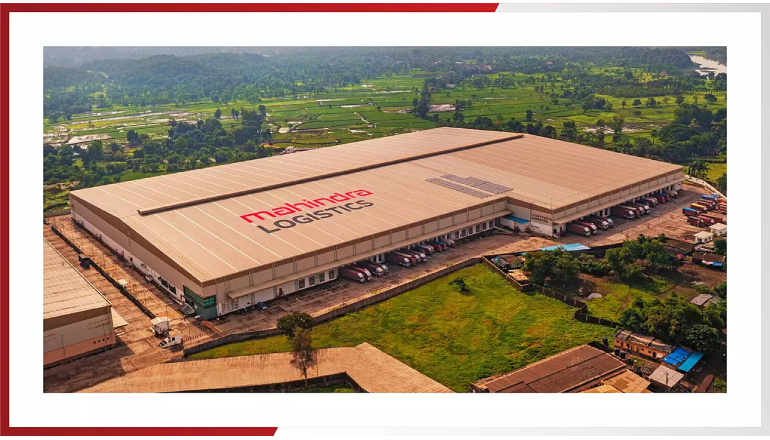
As India strives to achieve an ambitious target of attaining net-zero emissions by 2070, green buildings are playing a more crucial role. With quick urbanization and increasing energy demands, the construction sector must move towards sustainable practices that align with India’s commitment to carbon neutrality. Green buildings offer India a sustainable solution to reduce its carbon footprint and create a cleaner environment for future generations by maximizing resource use and offering green spaces.
India’s Net-Zero Commitment and the Built Environment
India envisions to reach net-zero by 2070 by placing achievable interim targets, including lowering carbon intensity by 45% by 2030. The built environment plays a significant role in this journey, with 70% of India yet to be built which could account for nearly 40% of global energy consumption and 30% of greenhouse gas (GHG) emissions. With a projected increase in urban population and infrastructure development, integrating green practices into design, construction, and operations stages is imperative to achieving these climate goals.
The Evolution of Green Buildings in India
The Indian Green Building Council (IGBC) has been at the forefront of promoting sustainable built environment since 2001. They have set an example by constructing the CII IGBC HQ in Hyderabad as a prime example. In addition to being recognized as the World’s Greenest Building in 2003, it has been certified as an IGBC Net Zero Energy Platinum Building since 2019.
One of the highlights of the Center is its environmentally friendly design, energy efficiency measures and north lighting. It has deployed high Energy Efficiency measures, and north lighting along with high performance chillers with IPLV value 6.58 (IkW/TR at part load is 0.534), bifacial rooftop SPV system (138 kWp).
Additionally, it has used materials with lower embodied energy and recycled content, low volatile organic compounds (VOC) paints, coatings, adhesives and sealants and green carpets. Fly ash has been used as a partial replacement for cement in concrete.
Features such as a green roof, lightweight soil and drought-tolerant native plants help in mitigating and minimizing the use of resources.
The ratings
Through its Green and Net Zero Building Rating Systems, IGBC has transformed India’s buildings and built environment landscape by

integrating energy-efficient designs, optimizing natural resources, and growing environmental consciousness. With a registered Green Building footprint of 13.14 billion sq. ft, and with over 15,290 projects adopting IGBC’s 32 rating systems, the Green Building movement in India has been advancing at a rapid pace and transforming India, into one of the global leaders in green built environment.
State-wise bifurcation
- Maharashtra – 3500+ registered buildings with IGBC
- Uttar Pradesh – 1400+ registered buildings with IGBC
- Karnataka – 1100+ registered buildings with IGBC
- Gujarat – 1100+ registered buildings with IGBC
- Telangana – 1000+ registered buildings with IGBC
- Gujarat – 1000+ registered buildings with IGBC
- Haryana – 900+ registered buildings with IGBC
- West Bengal – 800+ registered buildings with IGBC
How can green buildings help India achieve its carbon emission goals?
Green buildings are becoming an essential part of India’s strategy to achieve the 2070 target. One of the primary ways green buildings contribute to achieving net-zero targets is through their energy efficiency. Buildings consume a sizeable portion of energy, primarily for heating, cooling, lighting, and other electrical needs. Green buildings are designed to minimize energy consumption by using advanced high-performance envelopes, energy-efficient HVAC systems, and high-performance glazing. These buildings also incorporate renewable energy sources such as solar panels and wind turbines, reducing their reliance on grid electricity and lowering carbon emissions. The adoption of energy-efficient technologies helps reduce peak demand and encourages the shift toward cleaner energy, a key requirement for meeting India’s target of net-zero emissions by 2070.
In addition to energy efficiency, sustainable building materials play a crucial role in reducing the carbon footprint of green buildings. Conventional construction materials like concrete and steel have high embodied carbon, meaning their production, transportation, and installation contribute significantly to greenhouse gas emissions. Green buildings prioritize the use of low-carbon materials such as recycled steel, bamboo, fly ash-based concrete, application-based cement with high recycled content and locally sourced materials to minimize the environmental impact of the construction process. These sustainable materials not only reduce emissions associated with building production but also promote a circular economy by reducing waste and reusing resources.
Water conservation is another key component of green buildings that supports India’s net-zero targets. India faces significant water stress, with many regions experiencing frequent droughts and water scarcity. Green buildings integrate water-efficient systems to reduce both water consumption and wastewater generation. Features such as rainwater harvesting, water-efficient and ultra-low flow and flush fixtures (low-flow taps, showerheads, and toilets), and greywater recycling systems help reduce the demand on municipal water supplies. By conserving water resources, green buildings not only reduce operational costs but also contribute to the sustainable management of water—a vital resource for India’s future development.
The role of technology and innovation in green buildings cannot be overstated. Smart technologies such as energy management systems, automated lighting controls, occupancy sensors, and smart thermostats, intelligent energy monitoring systems allow building owners to monitor and adjust energy consumption in real-time. These technologies not only optimize the performance of green buildings but also provide valuable data for ongoing energy conservation efforts. Building automation systems can adjust heating, cooling, and lighting based on occupancy patterns, weather conditions, and time of day, ensuring that energy is used efficiently without waste, which also encourages green lifestyles.
As India continues to urbanize, the demand for energy-efficient, environmentally friendly buildings will only increase. Green buildings are not just an option but a necessity for India to achieve its net-zero targets.
Government Policies and Industry Collaboration
The Indian government has introduced various initiatives to promote green buildings and energy efficiency. Programs like the Energy Conservation Building Code (ECBC), Perform, Achieve, and Trade (PAT) scheme, and incentives for renewable energy adoption support the industry’s transition. Public-private partnerships and collaboration between stakeholders—developers, policymakers, architects, and technology providers—are essential to scaling up these efforts.
Various states across the country are encouraging the construction industry stakeholders to adopt IGBC rating programs through various financial and non-financial incentives and which can bring in more people embracing IGBC’s green practices. The construction of GREEN BUILDINGS is a WIN-WIN-WIN situation for the entire sustainable built ecosystem. Through the adoption of green buildings, the environment benefits with reduction in the Green House Gases (GHG) emissions; for the Government, GREEN BUILDINGS mean optimized use of municipal resources like water and power infrastructure; and, for the builders, developers, and end users it means faster clearance of projects, access to green finance and lower energy and water bills with lower interest rates on green home loans respectively .
By integrating green building practices into urban planning and development, the country can reduce its carbon footprint, create healthier living spaces, and ensure long-term environmental also societal benefits and economic sustainability. The journey towards net zero offers huge opportunity for every citizen of the country more so for the Indian construction industry stakeholders, with collective efforts, we can create a built environment that supports both economic growth and environmental responsibility.
Anand, Deputy Executive Director, Indian Green Building Council (CII IGBC). The views expressed are personal.












Very informative.